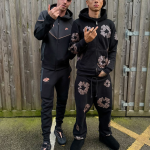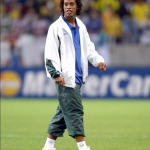
The 5 longest lasting technical sponsors (rest of the world edition)
Around the world from South America to Japan in search of the longest collaborations between clubs and brands
March 28th, 2022
In the memory of every fan, aficionado or simply soccer lover there are crests and brands that are indivisible from each other, and that even if actively involved have not contributed significantly to the successes and failures achieved on the field. All this was possible when, starting in 1970, all leagues allowed clubs to make agreements with major sports brands, given the numerous attempts in previous decades (such as the one between Vicenza and Lanerossi) to circumvent this prohibition.
Since the dawn of soccer, clubs have tried to make a profit by tying themselves to sponsors who would guarantee the money needed to cover costs. A mechanism triggered by the brands themselves that saw soccer as a very effective medium for advertising and that, over time, has proven to be a more than successful operation, as Daniel-Yaw Miller wrote in an article for The Business of Fashion, where he underlined the active role not only of the most classic sports brands but also of luxury brands that are increasingly interested in linking their name to that of a club. A combination that over the years has become essential, where one cannot survive without the other. After having summarized the most long-lived technical sponsors of both national teams and European clubs, we decided to take a tour of the world in search of the most representative and resistant brands.
1. adidas - River Plate
It is no coincidence that we start this journey from Buenos Aires, at the El Municipal, where River Plate has been taking to the field for forty years wearing game jerseys made by adidas. In fact, the red band that runs from the left shoulder to the right side is called the "Eternal Band" and was commissioned by then President Antonio Vespucio Liberti - to whom the River stadium is dedicated - to distinguish his team from the others who wore the usual white jersey. A detached royalty that has made River Plate one of the most recognizable and successful teams in South America, and that adidas has perfectly interpreted during its long collaboration. You only have to see how the German brand's logo has changed on the River Plate jersey, from the shamrock to the lettering to the three stripes in the shape of a mountain, to understand how long the relationship between the two has been going on. And how many champions have worn these shirts, from Hernan Crespo to Enzo Francescoli, from Ariel Ortega to Pablo Aimar, so much so that both parties have extended the sponsorship until December 31, 2027, bringing the agreement to 45 consecutive years.
2. adidas - Universidad de Chile
Another South American marriage for adidas, which does not rival River's record-breaking one, but is now well over twenty years old, is the one with Universidad de Chile, which began at the end of the last millennium. The team from the capital city also recently extended its agreement with the three stripes brand, extending it until 2025 to the satisfaction of both parties. The team, born in the local university - hence the name - during its collaboration with adidas has gone through both the most positive and the most negative moments of its history, first in 2006 when it went into receivership and was saved by a group of fans and then in 2011 when it triumphed in the South American Cup undefeated. With its big U in capital red in the center of the chest and deep blue tinting the jersey in a cross between preppy style and Latin soul, Universidad de Chile is one of the most iconic teams in South America.
3. PUMA - Shimizu S-Pulse
Few clubs in Japan have had the relevance of the Shimizu S-Pulse in creating what is now a movement in full swing, with direct contact with European and international soccer as the J-League has become. And one of the vehicles that has helped the Japanese league establish itself is undoubtedly the imagination of their game jerseys, out of the box and with patterns and colors never seen before. The Shimizu S-Pulse has ridden the iconoclasm of jerseys thanks to its long-standing partnership with PUMA, dating right from the club's founding in 1992 until now interrupted only by a brief three-year hiatus with Mizuno. Over the years PUMA has created various versions of the iconic orange jersey with the globe that takes its cue from the typical fruit of Shizuoka Prefecture, the miyagawa mandarin. A triumph of colors and flavors that has been filling the soccer fields under Mount Fuji for years.
4. adidas - Orlando Pirates F.C.
5. Nike - Kaizer Chiefs
In the South African city of Soweto is played one of the most heated derbies in the world, the one between the Orlando Pirates F.C. and the Kaizer Chiefs. The two teams share not only the city and its fans, but also the two most important technical sponsors in the world, adidas and Nike, who supply the kits to the clubs. The Orlando Pirates represent tradition, having been founded in 1937 and named after a film starring Errol Flynn, they have been linked to the Three Stripes brand since 1997 in an extremely fruitful partnership that has made the club one of the most famous on the African continent. For the Pirates, adidas has used the same templates dedicated over the years to Manchester United with squared white collars and the three stripes that follow the line of the shoulders, creating a British vibe in the former colony. Even the sponsor's logo, Vodacom, placed in the center of the jersey is reminiscent of the Vodafone logo on the Red Devils' jerseys at the beginning of the millennium.
The Kaizer Chiefs, on the other hand, are the most recent team from Soweto, having been founded in 1970, but they quickly became the team with the most fans in Sub-Saharan Africa. If you're wondering yes, the British outfit was named after this very club when Lucas Radebe moved from South Africa to Leeds United. The Chiefs have been linked since 2000 with Nike, which has made several jerseys playing with the club's social colors, gold and black, in numerous graphic forms.







































